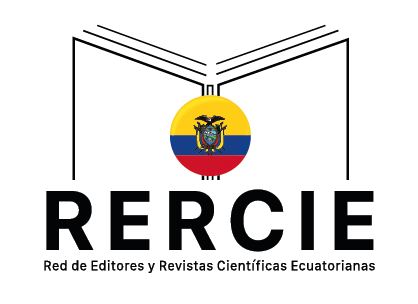Kinetic of peroxide index variation and shelf life of mayonnaise with microencapsulated oregano essential oil
DOI:
https://doi.org/10.36097/rsan.v1i61.3498Keywords:
mayonnaise, oregano essential oil, microencapsulation, peroxide indexAbstract
This work aimed to evaluate the influence of adding microencapsulated oregano (Origanum vulgare L.) essential oil (MOEO) on the stability of mayonnaise. Three formulations were developed with MOEO at different concentrations (0.0, 0.26, and 0.44%). Mayonnaises were stored at 35, 45, and 55 ºC until deterioration. The titratable acidity and peroxide index (PI) were determined during the accelerated storage. PI was subjected to linear regression analysis as a function of time. The parameters of the Arrhenius model (k and Ea) for the variation of PI and the temperature acceleration factor (Q10) were also determined. Mayonnaise, with 0.44% MOEO, presented the highest stability in delaying the increase in the PI, indicating the deterioration of this type of product. In all cases, the PI variation was adjusted to a zero-order reaction. Linear models were obtained to estimate the shelf life of mayonnaises.
Downloads
References
Alizadeh, L., Abdolmaleki, K., Nayebzadeh, K., & Shahin, R. (2019). Effects of tocopherol, rosemary essential oil and Ferulago angulata extract on oxidative stability of mayonnaise during its shelf life: A comparative study. Food Chemistry, 285, 46-52. https://doi.org/10.1016/j.foodchem.2019.01.028
Amorati, R., Foti, M. C., & Valgimigli, L. (2013). Antioxidant activity of essential oils. Journal of Agricultural and Food Chemistry, 61(46), 10835-10847. https://doi.org/10.1021/jf403496k
AOAC. (2012). Fat in foods: Chloroform-methanol extraction method. In Official Methods of Analysis of AOAC International (19ª ed.). AOAC International.
Bakkali, F., Averbeck, S., Averbeck, D., & Idaomar, M. (2008). Biological effects of essential oils - A review. Food and Chemical Toxicology, 46(2), 446-475. https://doi.org/10.1016/j.fct.2007.09.106
García, M., Silva, Y., & Casariego, A. (2014). Development of a mayonnaise with chitosan as natural antioxidant. Emirates Journal of Food and Agriculture, 26(10), 835-843. https://doi.org/10.9755/ejfa.v26i10.17867
Gavilanez, S. A., & Rojas, J. O. (2024). Optimization of the hydroalcoholic extraction process of oregano (Origanum vulgare L.). Journal of Food Science and Gastronomy, 2(2), 1-7. https://doi.org/10.5281/zenodo.13996953
International Organization for Standardization. (2017). ISO 3960: Animal and vegetable fats and oils - Determination of peroxide value - Iodometric (visual) endpoint determination.
Jacobsen, C., Horn, A. F., Sørensen, A. D. M., Farvin, K., & Nielsen, N. S. (2014). Antioxidative strategies to minimize oxidation in formulated food systems containing fish oils and omega‐3 fatty acids. In H. G. Kristinsson (Ed.), Antioxidants and Functional Components in Aquatic Foods (pp. 127-150). John Wiley & Sons. https://findit.dtu.dk/en/catalog/5c18e2ecd9001d015134d1a5
Mattia, C. di, Balestra, F., Sachetti, G., Neri, L., Mastrocola, D., & Pittia, P. (2015). Physical and structural properties of extra-virgin olive oil based mayonnaise. LWT - Food Science and Technology, 62(1), 764-770. https://doi.org/10.1016/j.lwt.2014.09.065
Nascimento, A. do, Mota, A., Paes, J. B., & Rodrigues, M. E. (2013). Cinética de degradação e vida-de-prateleira de suco integral de manga. Ciência Rural, 43(1), 172-177. https://doi.org/10.1590/S0103-84782012005000147
NC 50. (1999). Mayonesa. Especificaciones de calidad. National Standards Office, Cuba.
Passos, R. B. dos, Bazzo, G. C., Almeida, A. R., Montanheiro, C., & Manique, P. L. (2019). Evaluation of oxidative stability of mayonnaise containing poly ε-caprolactone nanoparticles loaded with thyme essential oil. Brazilian Journal of Pharmaceutical Sciences, 55, e18177. https://www.doi.org/10.1590/s2175-97902019000118177
Pedro, A. M. K., & Ferreira, M. M. C. (2006). Multivariate accelerated shelf-life testing: A novel approach for determining the shelf-life of foods. Journal of Chemometrics, 20(1-2), 76-83. https://doi.org/10.1002/cem.995
Plati, F., Papi, R., & Paraskevopoulou, A. (2021). Characterization of oregano essential oil (Origanum vulgare L. subsp. hirtum) particles produced by the novel nano spray drying technique. Foods, 10(12), 2923. https://doi.org/10.3390/foods10122923
Rojas-Molina, J. O., García, M. A., & Pino, J. A. (2022). Microencapsulation of oregano essential oil by spray drying as a natural food ingredient. Acta Alimentaria, 51(3), 403-412. https://doi.org/10.1556/066.2022.00066
Shaygannia, S., Reza Eshaghi, M., Fazel, M., & Hashemiravanet, M. (2021). The effect of microencapsulation of phenolic compounds from lemon waste by Persian and basil seed gums on the chemical and microbiological properties of mayonnaise. Preventive Nutrition and Food Science, 26(1), 82-91. https://doi.org/10.3746/pnf.2021.26.1.82
Touati, N., Barba, F. J., Louaileche, H., Frigola, A., & Esteve, M. J. (2016). Effect of storage time and temperature on the quality of fruit nectars: Determination of nutritional loss indicators. Journal of Food Quality, 39, 209-217. https://doi.org/10.1111/jfq.12189
Downloads
Published
How to Cite
Issue
Section
License
Copyright (c) 2025 Jaime O. Rojas-Molina, Mario A. García, Jorge A. Pino

This work is licensed under a Creative Commons Attribution-NonCommercial-NoDerivatives 4.0 International License.


















